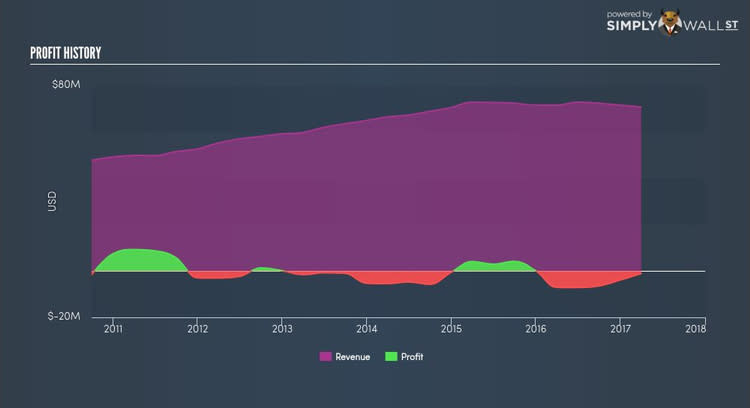The InterGroup Corporation (INTG): How Does It Impact Your Portfolio?

If you are a shareholder in The InterGroup Corporation’s (NASDAQ:INTG), or are thinking about investing in the company, knowing how it contributes to the risk and reward profile of your portfolio is important. Broadly speaking, there are two types of risk you should consider when investing in stocks such as INTG. The first type is company-specific risk, which can be diversified away by investing in other companies to reduce exposure to one particular stock. The second risk is market-wide, which arises from investing in the stock market. This risk reflects changes in economic and political factors that affects all stocks.
Not every stock is exposed to the same level of market risk. The most widely used metric to quantify a stock's market risk is beta, and the market as a whole represents a beta of one. A stock with a beta greater than one is expected to exhibit higher volatility resulting from market-wide shocks compared to one with a beta below one.
View our latest analysis for InterGroup
What is INTG’s market risk?
With a five-year beta of 0.07, InterGroup appears to be a less volatile company compared to the rest of the market. The stock will exhibit muted movements in both the downside and upside, in response to changing economic conditions, whereas the general market may move by a lot more. Based on this beta value, INTG appears to be a stock that an investor with a high-beta portfolio would look for to reduce risk exposure to the market.
Could INTG's size and industry cause it to be more volatile?
A market capitalisation of USD $59.39M puts INTG in the category of small-cap stocks, which tends to possess higher beta than larger companies. Furthermore, the company operates in the real estate industry, which has been found to have high sensitivity to market-wide shocks. Therefore, investors may expect high beta associated with small companies, as well as those operating in the real estate industry, relative to those more well-established firms in a more defensive industry. It seems as though there is an inconsistency in risks portrayed by INTG’s size and industry relative to its actual beta value. There may be a more fundamental driver which can explain this inconsistency, which we will examine below.
Can INTG's asset-composition point to a higher beta?
During times of economic downturn, low demand may cause companies to readjust production of their goods and services. It is more difficult for companies to lower their cost, if the majority of these costs are generated by fixed assets. Therefore, this is a type of risk which is associated with higher beta. I examine INTG’s ratio of fixed assets to total assets to see whether the company is highly exposed to the risk of this type of constraint. INTG's fixed assets to total assets ratio of higher than 30% shows that the company uses up a big chunk of its capital on assets that are hard to scale up or down in short notice. Thus, we can expect INTG to be more volatile in the face of market movements, relative to its peers of similar size but with a lower proportion of fixed assets on their books. However, this is the opposite to what INTG’s actual beta value suggests, which is lower stock volatility relative to the market.
What this means for you:
Are you a shareholder? You could benefit from lower risk during times of economic decline by holding onto INTG. Take into account your portfolio sensitivity to the market before you invest in the stock, as well as where we are in the current economic cycle. Depending on the composition of your portfolio, INTG may be a valuable stock to hold onto in order to cushion the impact of a downturn.
Are you a potential investor? Before you buy INTG, you should look at the stock in conjunction with their current portfolio holdings. INTG may be a great cushion during times of economic downturns due to its low beta. However, its high fixed cost may mean margins are squeezed if demand is low. I recommend taking into account its fundamentals as well before leaping into the investment.
Beta is one aspect of your portfolio construction to consider when holding or entering into a stock. But it is certainly not the only factor. Take a look at our most recent infographic report on InterGroup for a more in-depth analysis of the stock to help you make a well-informed investment decision. But if you are not interested in InterGroup anymore, you can use our free platform to see my list of over 50 other stocks with a high growth potential.
To help readers see pass the short term volatility of the financial market, we aim to bring you a long-term focused research analysis purely driven by fundamental data. Note that our analysis does not factor in the latest price sensitive company announcements.
The author is an independent contributor and at the time of publication had no position in the stocks mentioned.

